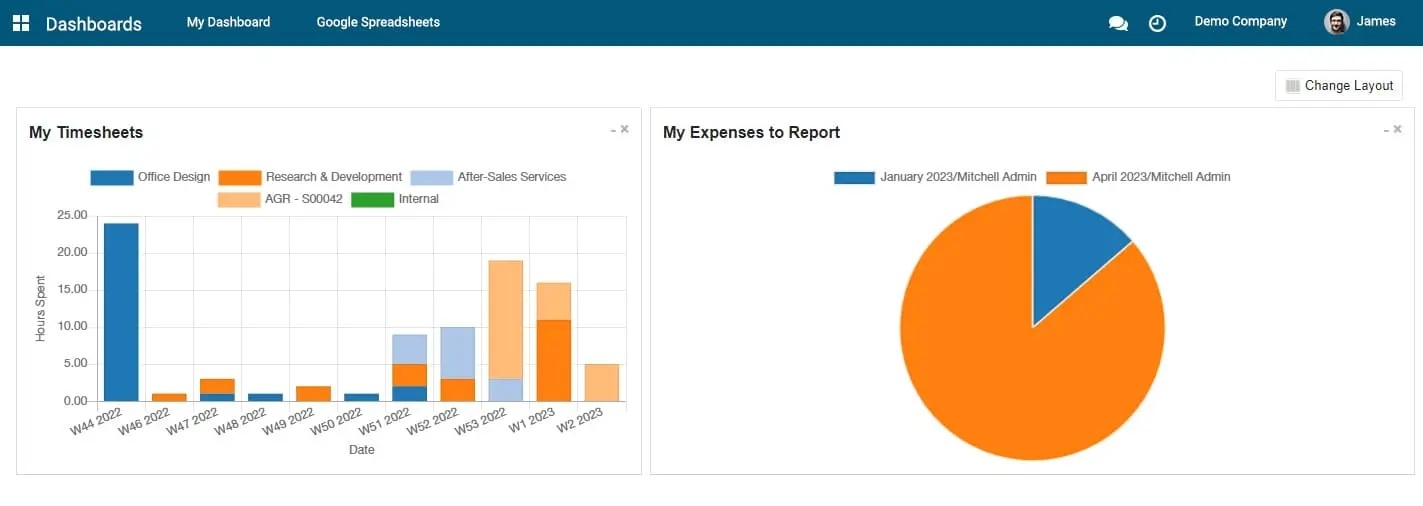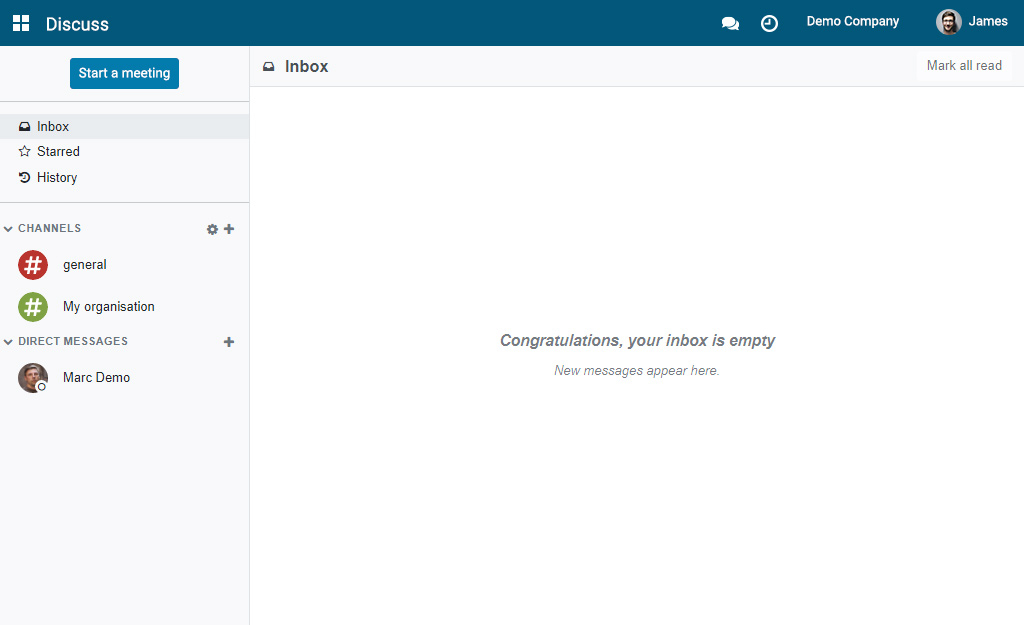9 Ways HR Software Transforms Your Business
Modern business demands constant innovation to maintain a competitive edge. Embrace HR software, a powerful tool to redefine your approach to workforce management.
In this article, we look at nine ways HR software can transform your organisation. HR software improves your operations by optimising HR processes, nurturing employee well-being, and facilitating data-driven decision-making.
Let's look at the multifaceted advantages that HR software offers to your business.
Jump to Section
- Streamlines HR processes
- Enhances employee engagement and satisfaction
- Optimises recruitment and hiring processes
- Ensures regulatory compliance and risk management
- Data-driven decision making
- Empowers training and development
- Improves communication and coordination
- Promotes employee well-being and work-life balance
- Increases employee retention and loyalty
1. Streamlines HR processes
Achieving success in international business today requires staying ahead of the curve. You can do this by integrating superior HR software programs into your operations. HR software programs can make HR processes easier, like managing payroll, onboarding employees, tracking time, and doing performance reviews.
HR specialists can save time by automating these tasks, allowing them to focus on strategic projects and engaging employees. By making HR processes simpler, we can reduce errors and ensure compliance, improving performance.
Investing in HR software allows companies to centralise all employee-related data. You can easily access important data, like employee info, performance reviews, training records, and benefits. Having all this information in one place helps with decision-making, communication, and dealing with human resources. A central device helps teams work together by letting everyone easily access and share records. This makes work more efficient.
2. Enhances employee engagement and satisfaction
An organisation must have engaged and happy employees. HR software plays a significant role in enhancing these aspects by providing tools for regular feedback, performance evaluations, and goal setting. When employers set clear goals and regularly give feedback, employees feel more motivated and able to accomplish their tasks. Their increased engagement positively affects job satisfaction and motivates them to contribute to the organisation's goals.
Moreover, HR software often has an employee self-service portal. This portal lets employees access their information, request time off, view pay slips, and update personal details. This self-service feature gives employees a sense of autonomy. Employees feel more in control of their work-related matters with this feature.
As a result, they become more involved because they can handle their tasks and cope with concerns independently. When workers are happy and engaged, they are more likely to stay with the organisation. It also contributes to a positive work environment.
3. Optimises recruitment and hiring processes
Efficient recruitment and hiring strategies are critical for attracting top talent. HR software enhances these procedures by automating job postings, applicant tracking, and candidate assessment. This automation significantly expedites the recruitment process, allowing businesses to quickly identify and hire top candidates. Additionally, HR software often utilises algorithms to match candidates with job requirements, ensuring a more accurate selection system.
Furthermore, these software solutions frequently combine with job forums and social media platforms. This helps make job postings reach more people and attract a wider range of candidates.
Using pre-screening questions and online checks helps find the best candidates more efficiently, saving time for HR professionals and applicants. To stay ahead of competitors, it is crucial to optimise recruitment strategies in the competitive job market.
4. Ensures regulatory compliance and risk management
Navigating the complex landscape of labor laws, policies, and compliance requirements is a challenge for any business. HR software programs can help a lot by automating compliance tracking and reporting.
The software can be configured to ensure that HR regulations and practices align with current legal requirements, reducing the risk of penalties and legal issues. It centralises compliance data and provides timely updates on policy changes, enabling organisations to adapt quickly and maintain compliance.
Moreover, automated indicators and notifications inside the HR software help to keep track of essential cut-off dates, together with renewing licenses or certifications. This proactive technique minimises the danger of overlooking vital compliance duties. Ultimately, Investing in HR software programs funds threat management, provides peace of mind, and helps organisations recognise growth and improvement.
5. Data-driven decision making
Data is a powerful tool for making informed decisions. HR software streamlines the collection and analysis of various metrics related to employee performance, attendance, turnover rates, and more. By harnessing these statistics, HR specialists can identify patterns, anticipate potential issues, and develop effective strategies to address them.
These insights lead to more precise workforce planning, targeted skills development, and optimised resource allocation. Furthermore, HR software regularly comes with reporting and analytics capabilities, allowing for customisable reviews and visualisations.
HR teams can present these reports to management, providing valuable insights into the well-being of the workforce and areas for development. Data-driven decision-making ensures that HR strategies are aligned with organisational goals, fostering a lifestyle of non-stop improvement and competitiveness.

6. Empowers training and development
Investing in employee development and growth is a strategy for every organisation. HR software can help with this effort by providing a platform to manage training programs and track employee development. This includes developing individual training plans, tracking courses completed, and assessing skill development.
This open-source approach ensures that employees have access to the resources they need to enhance their skills and knowledge. Additionally, HR software can help identify skill gaps among employees, allowing organisations to tailor training programs accordingly.
By aligning training with organisational goals and employee aspirations, companies can foster a culture of continuous learning and improvement. This, in turn, increases employee morale, productivity, and overall organisational performance.
7. Improves communication and coordination
Effective communication and coordination is essential for a cohesive work environment. HR software often includes features such as networking forums, discussion forums, and employee records. These tools facilitate open communication, knowledge sharing, and collaboration among employees, regardless of location or department.
By fostering a culture of open communication and collaboration, HR software fosters teamwork, problem-solving, and shared ideas. Employees feel more connected and engaged with their colleagues, which promotes a positive work environment.
Additionally, these tools can help bridge communication gaps between remote and in-house teams, ensuring everyone is on the same page and working towards a shared goal.

8. Promotes employee well-being and work-life balance
Employee well-being and work-life balance are critical to maintaining a productive and satisfied workforce. HR software plays an important role in promoting these aspects by providing features such as wellness programs, stress management features, flexible planning options, etc.
Employees can access these features through software, to support their physical and mental health needs. Additionally, HR software can streamline flexible business processes such as remote work or flexible hours.
This flexibility empowers employees to achieve a better work-life balance, increasing both job satisfaction and enjoyment. When employees feel supported and valued, they are more likely to remain loyal to the company and contribute positively to its success.
9. Increases employee retention and loyalty
Employee retention is a major concern for professionals, especially in competitive industries. HR software can help increase employee retention by enabling HR professionals to track employee satisfaction levels, identify potential issues, and implement strategies to address them.
Additionally, these software solutions often provide tools to identify employee growth and milestones, creating a sense of appreciation and loyalty. By streamlining HR processes and improving the overall employee experience, HR software contributes to a positive work environment that encourages employees to stay with the company longer.
Satisfied employees are more likely to recommend their workplace to others, helping to attract top talent and further enhance the company’s reputation.
Cost and ROI of HR software
Investing in HR software is a strategic decision that yields a significant return on investment (ROI) over time. While the first implementation may require an upfront investment, the long-term cost savings and efficiency benefits outweigh the costs. HR software improves resource management, reduces operational costs, and reduces the risk of costly mistakes associated with manual HR processes.
Additionally, the time saved by automating HR functions allows HR professionals to focus on implementing processes that improve productivity. By streamlining recruitment, strengthening employee engagement, and ensuring compliance, HR software directly impacts a company’s bottom line.
It is an investment that not only enhances HR performance but contributes to the success and sustainability of the organisation as a whole.
Final thought
Adding HR software to your business can change how you manage your employees. From streamlining HR processes to improving employee well-being and improving decision-making, the impact of HR software on your business is profound. Embrace these technological advancements and set your organisation up for success in today’s dynamic business environment.